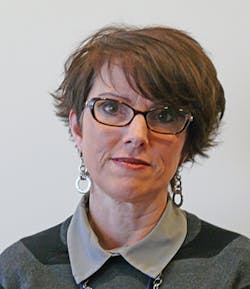LEDs deliver quality, efficient lighting in hazardous environments (MAGAZINE)
If forecasts hit their mark, the global industrial LED lighting market will reach $13B by 2023. While LED technology is not the only choice — or in some cases, even the best choice — to replace many energy-hungry lighting systems, it is rapidly becoming the leading option of plant managers striving to align energy and maintenance costs with overall business goals.
LEDs first were used nearly half a century ago as a replacement for incandescent indicator lamps on electronic equipment. They soon found applications in displays, signage, and later general illumination.
Thanks to advances in semiconductors, optics, materials, and manufacturing, LEDs have progressed in light output, energy efficiency, cost effectiveness, ruggedness, and color options. As a result, LED applications have grown exponentially, and fixtures are now available for industrial lighting applications, helping to fill the void left by the phase-out of mercury-vapor ballasts and lamps and metal-halide (MH) luminaires.
LED is poised to become the dominant technology for all kinds of industrial and general-purpose lighting. Several key factors will drive uptake in industrial environments.
Achieving required light levels at the lowest possible energy input is critical as energy costs rise. Government regulations are clamping down on energy waste and have put a target on traditional light sources.
Only a decade ago, 75-lm/W efficacy qualified LED luminaires as groundbreaking. This value pales in comparison with new chips offering efficacy above 200 lm/W. An end user can replace a first-generation LED product and achieve savings of more than 50%, not to mention the savings when retrofitting traditional light sources.
The US Department of Energy (DOE) forecasts that LED lighting will account for the majority of installations in the US by 2030. The DOE is pushing installations by requiring higher efficiencies in HID technologies and encouraging rebates for LED designs that meet higher efficiency requirements.
First-gen LEDs were designed without a thorough understanding of the electrical environments found in industrial facilities. As a result, these luminaires failed at rates as high as 50% within two months to two years after installation. Reacting to customers’ needs and new ANSI standards, manufacturers are making 6-kV surge protection a standard feature with 10 kV optional. The ANSI C62.41.2 guideline is 6 kV for outdoor applications and 10 kV for high-exposure outdoorapplications.
Better surge protection follows a trend of making LED lighting more robust to environments with severe weather conditions, excessive moisture or dust, corrosive atmospheres, and high ambient temperatures. Applications now include the demanding hazardous-location lighting sector, such as petrochemical processing, wastewater treatment, and utilities, where potentially-explosive gases, vapors, or liquids are present. Oil, gas, and petrochemical sectors account for the largest share of sales in hazardous location lighting. Vast facilities require extensive lighting networks that can consume excessive energy and demand expensive maintenance.
Facility managers choose LED-based products not only because they offer energy efficiency, but also because they deliver an increasingly shorter return on investment (ROI).
Initial investment for an LED retrofit or new installation will continue to drop in 2018 as the price of luminaires comes more in line with HIDs, making payback typically less than 3 years or, depending on factors such as rebates, as brief as 12 months. New luminaires improve ROI by saving upwards of 75% on energy costs while virtually eliminating work stoppages for lamp changes and improving productivity by providing uniform, high-quality light. Well-designed LED fixtures offer up to 100,000 hours of illumination with no lumen depreciation and no penalty for frequent on/off cycles.
Advances in delivering warm-white CCT with improved efficiencies and controls to customize light output enable facilities to provide the most productive light levels or preferred CCT for working conditions — no longer simply monochromatic blue-white light.
Finally, a variety of light-distribution patterns allows installers to maximize fixture spacing while maintaining light levels, minimizing the number of total fixtures needed and improving uniformity. As a result, overall project cost is reduced while employee safety, a critical concern in hazardous locations, is improved.
ELLEN HELM is manager of lighting for Appleton by Emerson, which offers area, task,and indoor/outdoor lighting designed for industrial use and hazardous locations.





